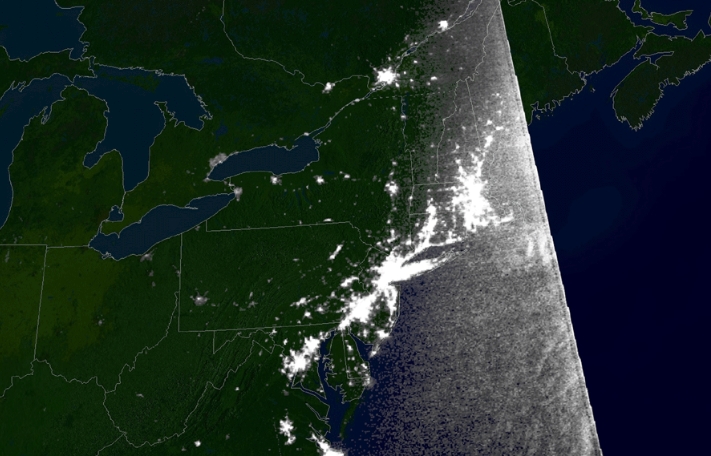Power crisis looms: PJM warns of grid collapse as AI servers and retiring plants collide
07/23/2025 / By Willow Tohi

- PJM Interconnection’s grid faces capacity crunch amid AI data center boom.
- I servers now consume twice as much power as older models, straining the eastern U.S. grid.
- Retired fossil fuel plants and renewable intermittency worsen reliability risks.
- Capacity auction costs surged to $14.7B, driven by data center electricity demand.
- Watchdog urges data centers to build self-generation to ease grid strain.
The nation’s largest power grid, serving 65 million people across 13 states and Washington, D.C., has reached its operational limits, according to a warning from the independent watchdog Monitoring Analytics. The PJM Interconnection—spanning regions such as Maryland, Pennsylvania, and Virginia’s “Data Center Alley”—is grappling with insufficient capacity to meet rising demand, driven largely by energy-intensive artificial intelligence infrastructure. As summer heat triggers peak electricity use, regulators and industry experts now caution that data centers may need to generate their own power unless grid investments accelerate. The crisis underscores decades-long policy shifts toward renewable energy, fossil fuel plant retirements and the unexpected growth of hyperscale computing.
The data center boom outpaces grid capacity
The rapid expansion of AI data centers has become a critical factor in the grid’s strain. Advanced AI servers, such as Nvidia’s GB200 model, now consume 120 kilowatts per rack—double the energy of older units. Multiplying these demands across thousands of servers in sprawling facilities has led to a “perfect storm,” pushing the grid past its limits. Loudoun County, Virginia, a global epicenter of data infrastructure, faces particular pressure.
Joe Bowring, president of Monitoring Analytics, emphasized the urgency: “There is simply no new capacity to meet new loads. The solution is to make sure that people who want to build data centers are serious enough about it to bring their own generation.”
Retired power plants leave gaps as renewables falter
Compounding the issue, 21% of PJM’s existing generating capacity will retire by 2030, driven by federal and state policies favoring decarbonization. While renewables like wind and solar have expanded, their intermittent nature creates reliability risks, especially during peak demand periods. Monday’s capacity auction results, projected to exceed record highs, underscore the grid’s vulnerability: prices rose to $14.7 billion last year, with over $9.4 billion attributed directly to data center demand.
The U.S. electric grid was once resilient due to coal and natural gas plants, which provided steady “baseload” power. However, aggressive closures of fossil fuel infrastructure—as part of broader climate initiatives—have left the grid dependent on uneven energy sources.
Market instability and the Mid-Atlantic’s grid stir
Political and economic pressures are intensifying. Goldman Sachs recently declared that Mid-Atlantic power prices “finally caught up to AI’s load growth,” while Maryland’s network has become so precarious that state officials warned of rolling blackouts. Pennsylvania’s emergency intervention in June—airdropping generators to stabilize Maryland’s grid—highlighted how interconnected and fragile the system has become.
Summer 2025 has brought record-high wholesale power prices in PJM, outpacing even historically pricey markets on the West Coast. Bowring noted that future solutions must align grid expansions with data center development, including fast-tracked permits for facilities that bring their own generation.
A crossroads for energy policy and technology
The PJM crisis illustrates the high stakes of balancing innovation with infrastructure. Data centers, vital to AI growth, now face pressure to become energy-independent while regulators scramble to close capacity gaps. If unresolved, shortages could stifle technological progress and inflate consumer costs. As Bowring stressed, the path forward hinges on policymakers, tech firms and grid operators collaborating to ensure reliability without sacrificing progress. With summer’s peak demand still weeks away, the grid’s next test is as much about foresight as it is about survival.
Sources for this article include:
Submit a correction >>
Tagged Under:
AI, artificial intelligence, big government, Big Tech, computing, electricity, energy report, energy supply, fossil fuels, future tech, Glitch, information technology, power, power grid, renewable energy
This article may contain statements that reflect the opinion of the author
RECENT NEWS & ARTICLES
COPYRIGHT © 2017 INFORMATIONTECHNOLOGY.NEWS




















